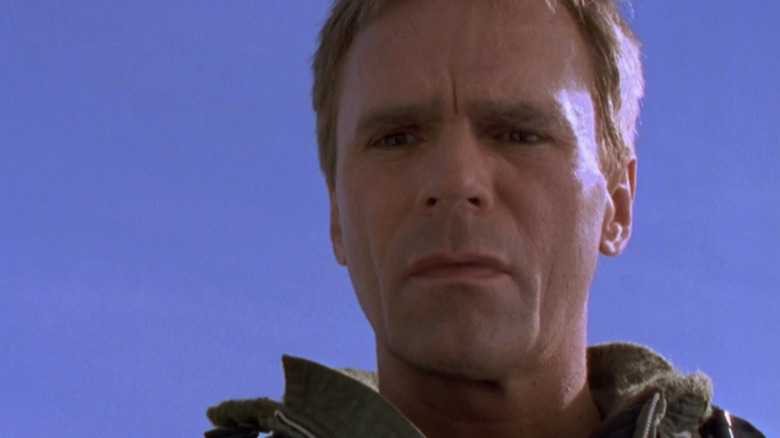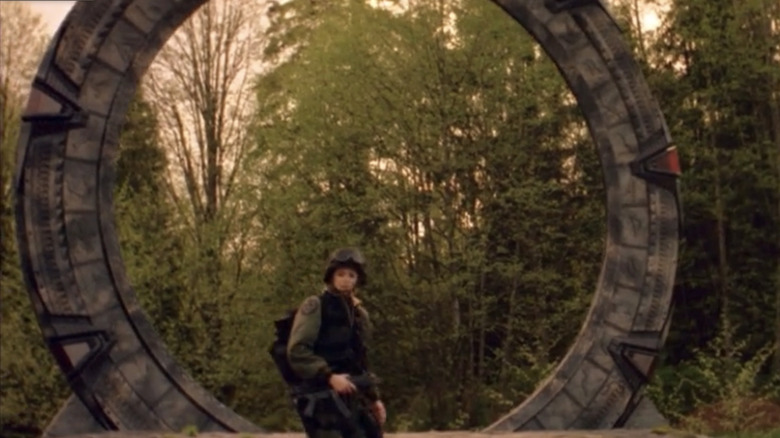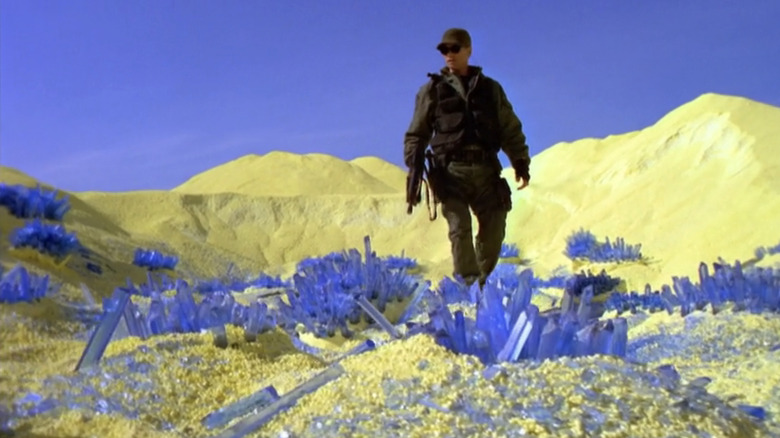Although it was by no means a mega hit that commanded the type of wide-ranging cultural affect of many different reveals of its technology, “Stargate SG-1” maintained a cult following all through its run and stays spectacular just by advantage of what it represented. That’s to say, the way in which wherein creators Brad Wright and Jonathan Glassner took Roland Emmerich’s unique 1994 “Stargate” film and spun a full 10 seasons of intergalactic exploration motion was a feat in and of itself.
Emmerich’s movie was sufficient of a field workplace success to immediate speak of a complete “Stargate” trilogy, however the story of the SG-1 crew would in the end unfold on the small display screen, with Wright and Glassner shepherding the mission utilizing an entire new forged of actors that had been enjoying the identical characters from the film. In the end, the Syfy channel cancelled SG-1″ in 2007, however by that time the present had run for a full decade — a formidable accomplishment not solely due to the way in which wherein Wright and Glassner had efficiently turned an enormous price range sci-fi epic right into a cult hit TV present, but additionally as a result of they’d managed to inform a galaxy-spanning story that required its characters to go to a various array worlds for a full 10 years whereas taking pictures from the identical Canadian location.
The titular SG-1 group’s entire goal was to make use of the Stargate portal to analyze alien worlds, which is stable sufficient as a sci-fi premise. In sensible phrases, nonetheless, this made producing the collection considerably of a problem, given its base of manufacturing.
Discovering new areas for Stargate SG-1 was tough
“Stargate SG-1” begins roughly a 12 months after Roland Emmerich’s “Stargate” wraps up. Within the present, the U.S. authorities has tasked a U.S. Air Drive squad, named SG-1, to discover alien worlds utilizing the eponymous portal and guard towards assaults by otherworldly forces. Because the present goes on, the squad visits an increasing number of intergalactic worlds and will get to know their inhabitants, with the present’s writers utilizing our personal historical past as a foundation for most of the environments and races encountered within the collection. As an illustration, within the season 1 installment “Emancipation” (which, in line with IMDb, occurs to be the worst episode of “Stargate SG-1”), the SG-1 gang go to the planet Simarka, house to a nomadic race descended from Mongols referred to as the Shavadai.
However because the present went on, discovering new methods of depicting these numerous planets and other people turned more and more troublesome. In essence, the collection’ producers had been tasked with continually making their Vancouver, British Columbia taking pictures location seem like someplace utterly completely different. VFX Supervisor John Gajdecki as soon as spoke to Companion (through GateWorld) concerning the preliminary issues he confronted when the present started manufacturing in 1997. He recalled being given entry to sure props from Emmerich’s movie, which actually helped. Nonetheless, the actual subject got here with looking for appropriate areas for the varied storylines. As he famous:
“Episode 1, episode 2, we’re all the time outdoors. It is all the time within the rain as a result of that was the climate on the time. So we actually began struggling to create areas that weren’t simply within the forest.”
Whereas stunning in its personal method, Vancouver did not essentially supply a lot variety past closely forested areas — one thing that clearly posed a serious problem for a group tasked with making a sci-fi present that basically revolved round exploring new and numerous planets.
Stargate SG-1’s location issues received worse over time
In his Companion interview, John Gajdecki offered particular examples of the difficulties he and his group confronted taking pictures in Vancouver, pointing to season 1, episode 7, “Chilly Lazarus,” which was filmed in yellow sulfur pits. Because the VFX supervisor recalled:
“There was one episode the place they had been on this planet and every little thing was yellow. It was sulfur — it was this weird yellow planet. And we had been filming in these big sulfur pits that they’ve down by the docks. It was such a sunny day that everyone was sweating, and the sulfur … you’d stroll by it and it might kick up and get in your face, and your beads of sweat would simply drop it into your eyes. They usually had numerous individuals there to handle us!”
Although the present’s crew in the end discovered methods to depict the varied worlds of “Stargate SG-1,” because the collection expanded these types of issues by no means really went away. By the top of its run, “SG-1” had spawned different spin-offs, making for a modest media empire that makes watching the “Stargate” franchise so as considerably of a problem at the moment. This additionally made the placement points that rather more excruciating, with Brad Wright commenting on the entire thing throughout a 2022 Reddit AMA:
“Sure, it grew more and more troublesome and irritating to exit into the woods of British Columbia and fake it was one other planet. Particularly since Vancouver saved rising into the open areas we had been utilizing.”
Nonetheless, the sci-fi settings of “Stargate” arguably declined because the collection went on and additional collection had been created, with Wright and co. having to do one of the best they may with their price range and Canadian setting. The truth that they managed it for 10 seasons on “SG-1” — to not point out the spin-offs — is, nonetheless, nonetheless an simple feat.


